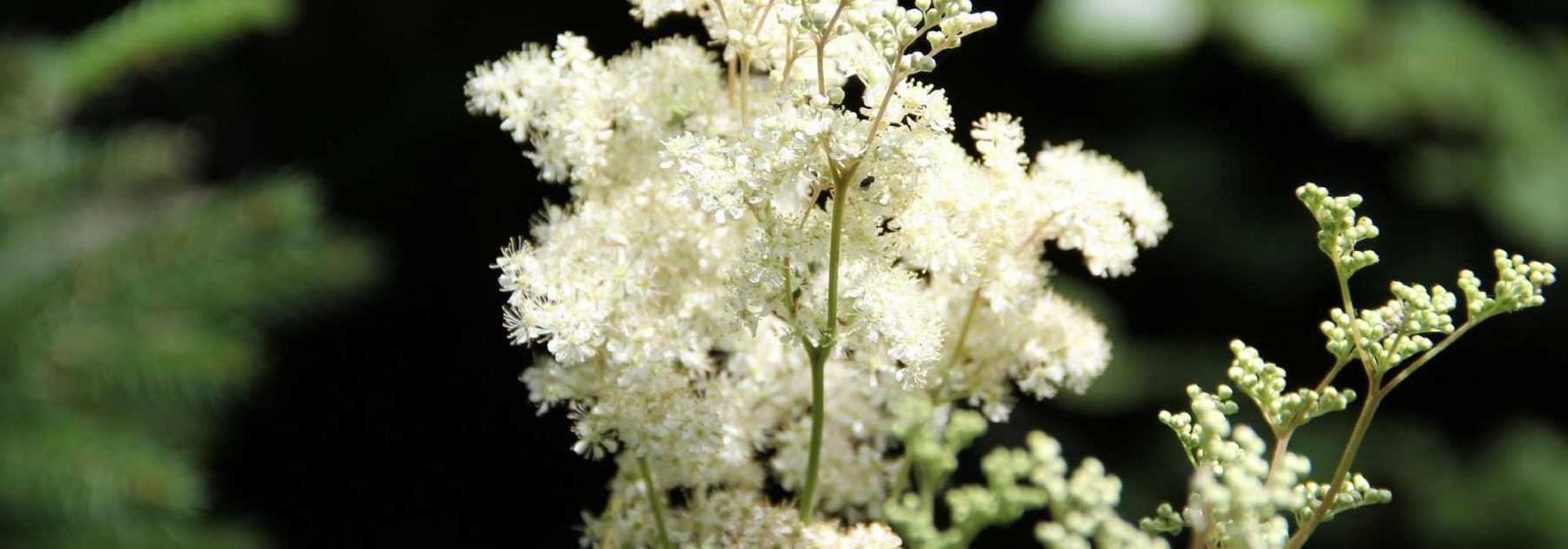
Filipendula, Queen of the Meadow: Planting and Care
Contents
The Meadowsweet in a Few Words
- Filipendula is the essential perennial for heavy, wet soils
- It produces an extraordinary, airy bloom with plumes of white or pink flowers
- Majestic and ethereal, some Filipendula varieties can reach over 2 metres in height
- Highly hardy, it thrives even in the coldest regions
- This is the iconic perennial for pond edges, riverbanks and wild, damp borders
Our expert's word
Meadowsweet (Filipendula ulmaria), also known as Queen of the Meadow, is a stunning perennial for damp soils whose ethereal, nectar-rich summer blooms and beautifully divided foliage create a remarkable blend of lushness and lightness, perfect for woodland settings.
Both wild and elegant, it suits all garden types provided the soil remains moist in summer.
In midsummer, it produces exceptional feathery plumes of white, red, or pink flowers, with some varieties reaching nearly 2 metres in height.
While white meadowsweet is most common, varieties like Filipendula vulgaris, Filipendula rubra ‘Venusta’, and Filipendula purpurea ‘Elegans’ captivate with their vibrant pink hues.
Easy to grow, disease-resistant, and vigorous, this medicinal perennial widely used in herbal teas has just one requirement: moisture.
Meadowsweet thrives in sun or partial shade in any fresh to moist soil, flourishing in bog gardens, waterside plantings, and naturalistic borders that retain moisture. With its delicate texture and minimal maintenance needs, it’s ideal for naturalistic gardens, brightening shady corners with unmatched luminosity.
Discover our Meadowsweet collection, from new introductions to exclusives, and welcome this effortless, beautiful perennial – essential for pond edges and moist garden areas!
Description and botany
Botanical data
- Latin name Filipendula
- Family Rosaceae
- Common name Meadowsweet, Queen of the Meadow
- Flowering June to August
- Height 0.30 to 1.50 m
- Exposure Sun, partial shade
- Soil type Neutral, acidic, well-drained
- Hardiness -15°C
Belonging to the extensive Rosaceae family, Filipendula, often called Meadowsweet, is a hardy rhizomatous perennial, native to riverbanks and damp meadows of North America. It has adapted well across our regions, except in the north, where it grows naturally in ditches, along waterways, in damp meadows or woodlands.
The genus includes around 10 species, including Filipendula ulmaria, which comes in numerous cultivars such as ‘Plena’ with double flowers and ‘Variegata’ with variegated foliage, Filipendula palmata (Meadowsweet) with large palmate leaves, Filipendula purpurea (Purple Meadowsweet) with its dwarf form ‘Nana’, the very hardy Filipendula vulgaris (or Dropwort), Filipendula rubra or Queen of the Prairie, and Filipendula camtschatica, which reaches over 2 metres in height.
In spring, Filipendula displays an upright, clump-forming habit, sometimes slightly spreading and very bushy, more or less airy. Depending on the species, plant height varies; some, like Filipendula rubra ‘Venusta’ and Filipendula palmata, form large, structural bushes, which can reach 2 m tall and 70 cm wide when in flower. Others are more modest and won’t exceed 40 cm.
Once well-established, this rhizomatous perennial grows quickly to form vigorous, non-spreading clumps over time, though they can become somewhat invasive. They may also produce self-seeding. It’s a beautiful colonising plant, ideal for naturalising in woodland areas or near ponds. Filipendula ulmaria helps vegetate and stabilise riverbanks.
From its rhizomatous base emerge in spring multiple branching stems, sometimes slightly tinged with purple, sturdy enough to not require staking. They bear large, glossy leaves, pinnate with a quilted surface, arranged alternately on long petioles.
Ranging from 10 to 45 cm long, they divide into terminal leaflets with irregular lobes of varying depths and carry smaller lateral leaflets, smooth or downy underneath. This finely divided foliage, toothed like a fern in Filipendula vulgaris, in others resembles that of castor bean or some herbaceous peonies; it is both elegant and airy. It consists of broad, deeply lobed palmate leaves in Filipendula palmata, or Meadowsweet.
Their colour ranges from bright green to dark green. In Filipendula rubra, young leaves are purple in spring. In ‘Variegata’, the green foliage is variegated with golden yellow at the leaf centre, while in ‘Aurea’, it transitions through many shades of soft green and lemon green throughout the season. Filipendula ‘Red Umbrellas’ has large green leaves with very graphic dark purple veins.
Filipendula retains this beautiful deciduous foliage until the first frosts.
From May to September, the flowering in misty plumes rises above this large, divided foliage. At the tips of stiff stems, feathery corymbs 2 to 25 cm in diameter, made up of numerous small star-shaped flowers in white, yellowish-white, red, soft pink, candy pink (‘Venusta’) or vivid fuchsia pink (Filipendula purpurea), bloom in a colourful haze. Each flower has long, protruding stamens, giving the plant an increasingly ethereal appearance as they open.
This delicate flowering lasts for several weeks. The faded inflorescences dry in russet-brown tones and remain decorative long after flowering, even under frost.
They produce seeds that self-sow easily.
The plant emits a light, sweet almond fragrance that attracts pollinators, especially butterflies.


Some cultivars with varied colours: Filipendula ulmaria, Filipendula palmata, Filipendula purpurea, Filipendula ‘Red Umbrellas’, Filipendula ulmaria ‘Plena’.
This is a low-maintenance plant, hardy down to -15°C, thriving in cool, shaded woodland settings. It is indispensable for heavy, damp clay soils.
Easy to grow once established, it prefers rich, moist to wet soil and thrives in both sunny and partially shaded spots.
It is ideal near ponds or water features, alongside other moisture-loving plants, in well-watered borders or fresh wild gardens.
It also has water-purifying properties for the waters it grows in. It is frequently used in phytoremediation systems to filter water bodies.
Meadowsweet or Filipendula ulmaria has been used for centuries in natural medicine for its many benefits. Aromatic, it flavours teas and beverages, while its flower buds contain analgesic and anti-inflammatory properties, as well as being diuretic, astringent, and tonic.


The foliage of Filipendula is highly decorative: Filipendula purpurea ‘Alba’, Filipendula ulmaria ‘Variegata’, Filipendula vulgaris, Filipendula ulmaria ‘Aurea’, Filipendula ‘Red Umbrellas’.
Main species and varieties
The genus includes around ten species, including Filipendula ulmaria or Meadowsweet, which comes in many interesting cultivars such as ‘Plena’ with its double flowers and ‘Variegata’ with yellow-gold and green variegated foliage.
The different species allow for variation in height (from 40 cm to nearly 2 m tall) and colour of the feathery corymbs (white, pink, or red).
Spectacular in size, Filipendula camtschatica can reach 2 m in height under good conditions, while Filipendula palmata ‘Nana’ will not exceed 40 cm tall at maturity.
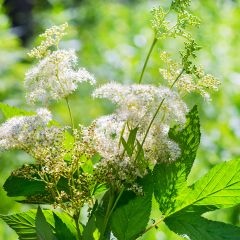
Filipendula ulmaria
- Flowering time July to September
- Height at maturity 1,20 m
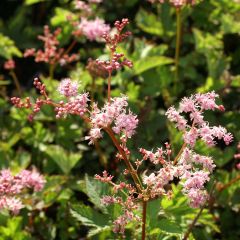
Filipendula Kahome
- Flowering time July to September
- Height at maturity 40 cm

Filipendula palmata Nana
- Flowering time July to September
- Height at maturity 40 cm
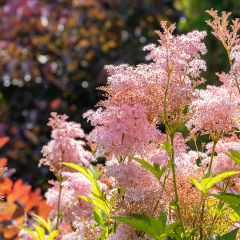
Filipendula rubra Venusta
- Flowering time August, September
- Height at maturity 1,80 m
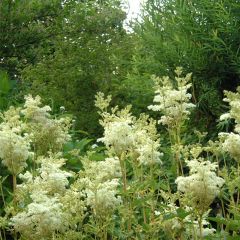
Filipendula ulmaria Variegata
- Flowering time July to September
- Height at maturity 60 cm
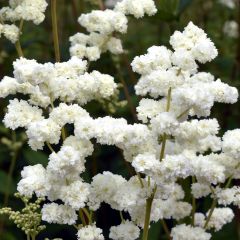
Filipendula ulmaria Plena
- Flowering time July to September
- Height at maturity 1 m

Filipendula camtschatica
- Flowering time August to October
- Height at maturity 2,50 m
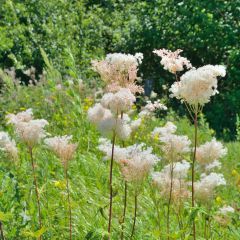
Filipendula palmata
- Flowering time July to September
- Height at maturity 1 m
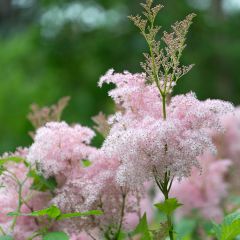
Filipendula purpurea Elegans
- Flowering time July to September
- Height at maturity 70 cm
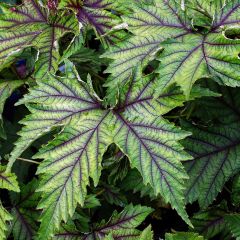
Filipendula Red Umbrellas
- Flowering time July, August
- Height at maturity 70 cm
Discover other Filipendula
Planting
Where to plant Filipendula?
Hardy down to -15°C, Filipendula can be planted almost anywhere in France: its only requirement is moist soil, it cannot tolerate lack of water, nor dry soils. It will withstand summer heat in warm regions, provided the soil remains consistently moist but never waterlogged. A cool soil allows it to thrive vigorously.
It grows in damp areas in full sun if the soil remains moist or in partial shade in hot climates, under the protective cover of deciduous trees or shrubs.
Tolerant, it adapts to ordinary soil, neutral to acidic, even heavy. But it is in rich, humus-rich soil that it will be most luxuriant and grow tallest with the most abundant blooms.
It truly shines at the edge of a damp woodland, on the banks of a pond or pool, which it will illuminate with its bright flowering. It’s an excellent plant for naturalising in woodland areas. It is spectacular when planted in groups.
The tallest Filipendulas (Filipendula rubra, Filipendula camtschatica) will form large, structural shrubs at the back of borders. The smaller Filipendulas (‘Kahome’, ‘Nana’) are ideal for small gardens and will add lightness to borders and edges.
When to plant Filipendula?
Plant Filipendula in spring from February to April, once the frosts have passed, or in autumn from September to October, after the peak heat.
How to plant Meadowsweet?
In the ground
Plant 3 to 5 plants per m², spaced at least 30 to 50 cm apart to allow the plant to develop well. For a striking effect by a pond, opt for planting in small groups.
- Dig a hole 2 to 3 times wider than the root ball
- In poor soil, add well-rotted compost to the bottom of the hole
- Plant the root ball level with the soil surface, ensuring the crown is at ground level
- Backfill the soil around the roots and firm down
- Water thoroughly and then regularly during summer to aid establishment
- Keep the soil moist at the base with an organic mulch during summer
Growing Filipendula in pots
Choose a smaller, less vigorous variety (‘Nana’). Even more so than in the ground, Filipendula will need plenty of water. Plant it in a large container, in a mix of compost and potting soil that remains consistently moist. Add a generous layer of drainage material (gravel or clay pebbles) at the bottom of the pot to improve drainage. Mulch and water very regularly, never allowing the growing medium to dry out. Fertilise regularly with an organic feed during the flowering period.
Maintenance, Pruning and Care
The Meadowsweet is a perennial plant that is undemanding as long as it doesn’t lack water. It thrives best in moist soil: during the first springs and summers, provide it with generous watering. During particularly dry summers, water daily but avoid waterlogging. If planted near a water feature, no additional watering is needed. Apply a good organic mulch around the base to reduce evaporation.
In autumn, add one or two spadefuls of compost around the dormant rhizomes at the base of the clump.
Regularly remove faded flowers at foliage level to prolong flowering, or leave them to dry on the plant to enjoy them throughout winter.
In late winter or late autumn, cut back the clumps to ground level. If your meadowsweet becomes invasive, control its spread by slicing through the rhizomes.
Harvesting Flowers
Delicious and therapeutic in infusions, you can harvest the flowering tops of Meadowsweet (Filipendula ulmaria) just as the flowers begin to bloom if desired.
Dry them in the shade, away from direct sunlight. Store them afterwards in a paper bag or a jar.
Diseases and potential pests
Never sick, the Meadowsweet is a hardy plant that is prone to neither disease nor pests. It’s the perfect perennial for beginner gardeners.
Propagation
The Meadowsweet propagates very easily by dividing clumps, after 3 to 5 years, when the plant is well established but the rootstock isn’t yet too difficult to handle.
- In March, use a spade to dig up some rhizomes with at least one eye before the leaves reappear
- Replant these sections immediately in the garden in well-loosened, moist soil – they’ll establish easily
Pairing
The Meadowsweet or Queen of the Meadow is the essential airy perennial for brightening cool areas in a lush setting. Its elegant, feathery silhouette, its opulent deeply-cut foliage, and its pastel pink, creamy-white or candy-pink inflorescences bring a great sense of lightness near a pond, in a damp border or a cool flower bed. It adds charm to dreamy gardens with a countryside feel or prairie-style plantings, offering breath, luminosity and colour.
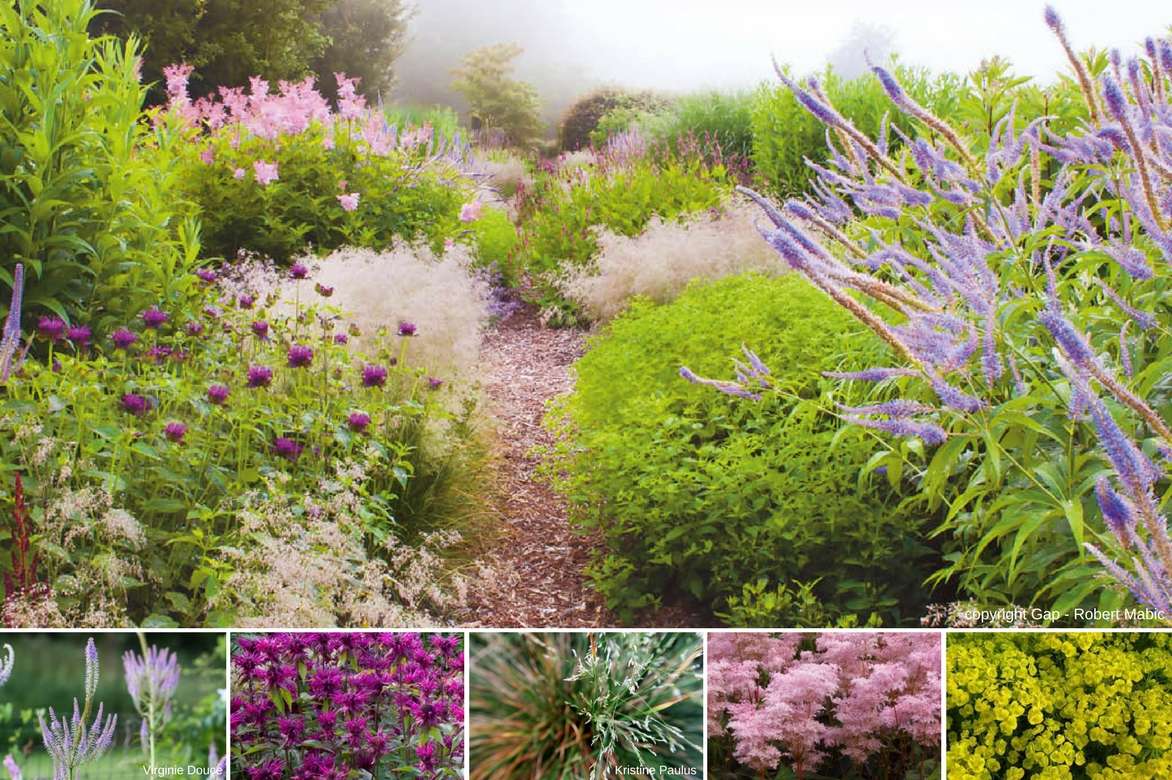

An example of a natural planting combination: Monarda ‘Scorpion’, Deschampsia cespitosa, Veronicastrum virginicum ‘Fascination’, Euphorbia waldsteinii ‘Betten’, Filipendula palmata.
Whether it reaches nearly 2m in height (Filipendula camtschatica or F. rubra ‘Venusta’) or is more modest in size (‘Nana’, F. vulgaris ‘Kahome’), it fits perfectly into all shady, cool settings and can play either the dazzling role at the back of a border, creating a colourful haze, or that of a floriferous airy mass for the edges of a damp border, alongside hardy geraniums, moisture-loving ground-covering polygonums and heucheras.
On the edges of a pond or stream bank, it will pair beautifully with moisture-loving perennials, such as Japanese irises, goat’s beards, Joe Pye weeds, Chinese loosestrife, butterburs and knotweeds.
In a wild garden at the back of a border, its airy pink or white corymbs will harmonise delightfully with the mauve, lilac, lavender, violet and other cool tones of astilbes and purple loosestrifes.
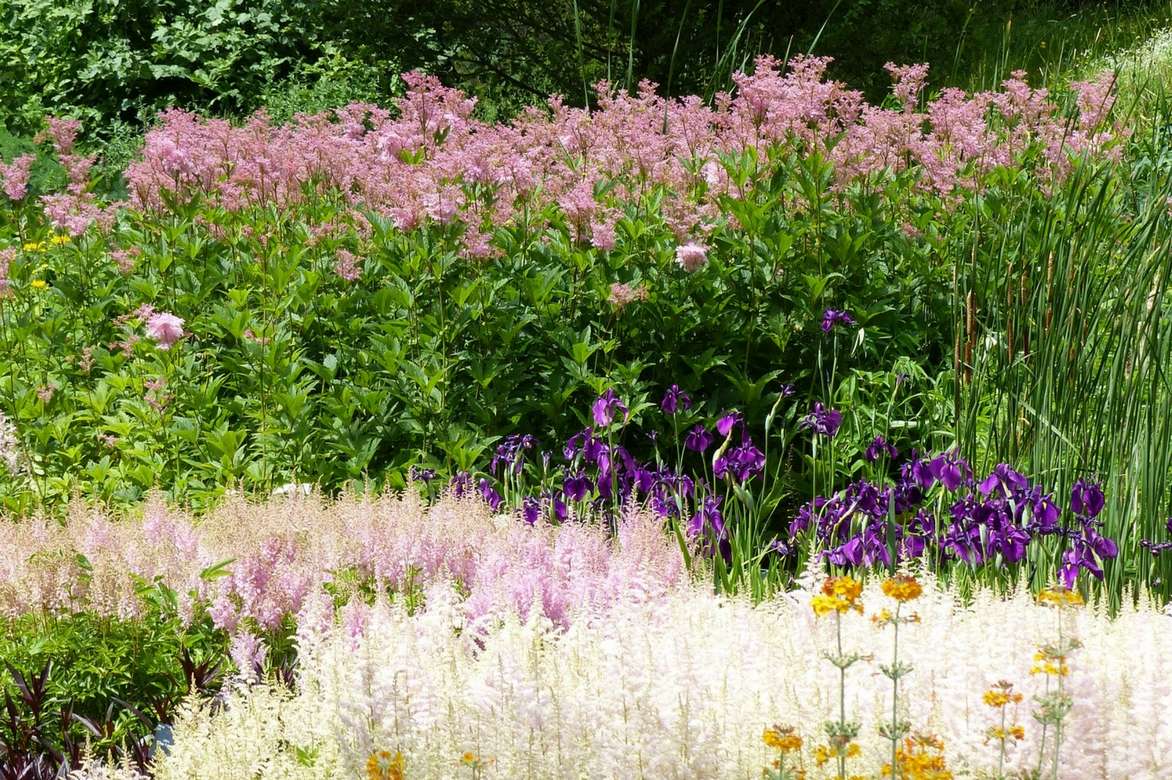

A planting idea for consistently moist soil: Filipendula rubra ‘Venusta’, Iris hollandica ‘Blue Magic’, Astilbe simplicifolia ‘Pink Lightning’, Astilbe simplicifolia ‘Hennie Graafland’ and Primula bulleyana.
While it harmonises with similar forms like astilbes, it contrasts beautifully with the more defined outlines of a Hosta Sun Power or with the graphic leaves of sedges and ferns.
It pairs easily with bee balms and other perennials with generous foliage like Bear’s breeches, or even Chinese rhubarb.
→ Discover 5 beautiful ideas for pairing Meadowsweet
Useful resources
- From classic varieties to exclusive selections, discover all our Filipendulas
- Our advice sheets: White-flowered Filipendulas: 6 varieties to discover, and Pink-flowered Filipendulas: 6 varieties to discover
- Discover comfort plants in our advice sheet
- Our advice sheet: Choosing a Filipendula or Meadowsweet
- Subscribe!
- Contents
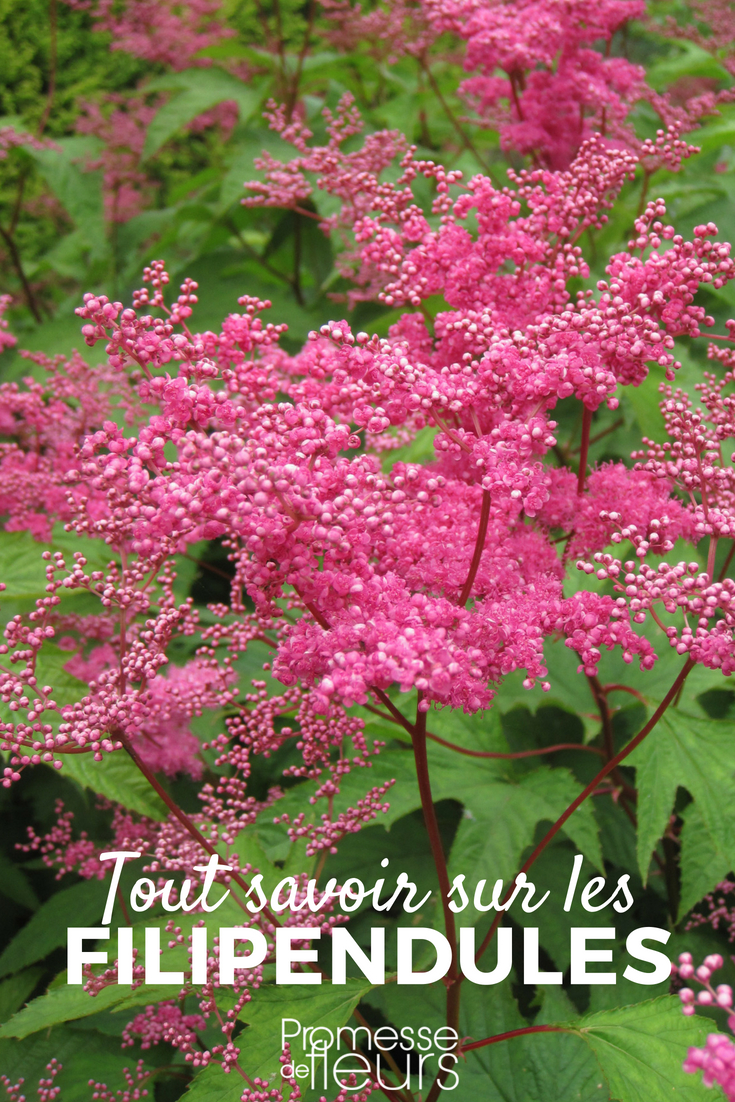

































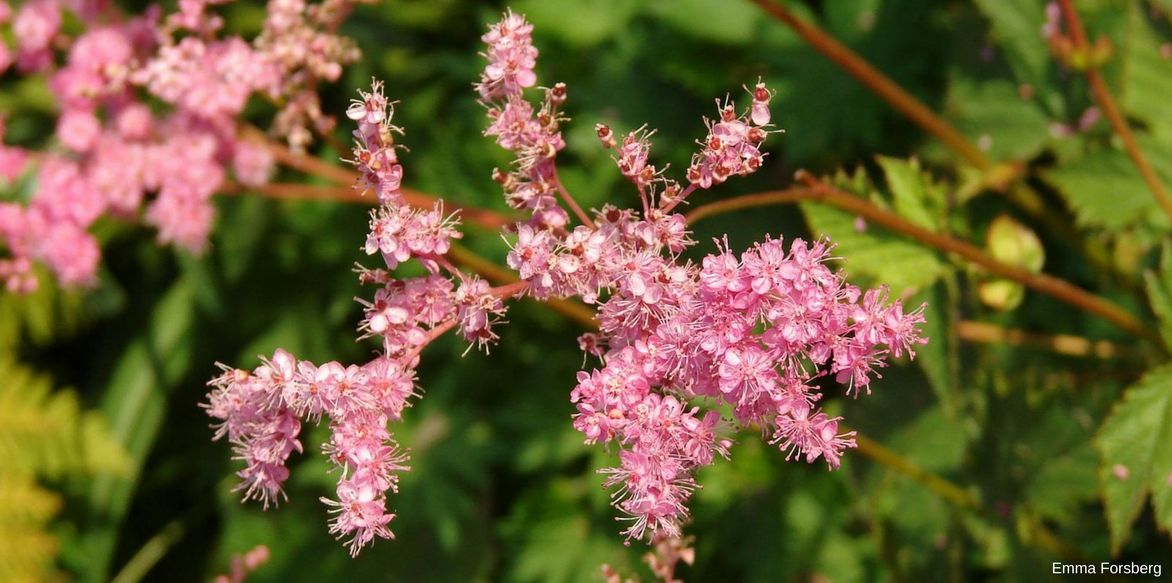

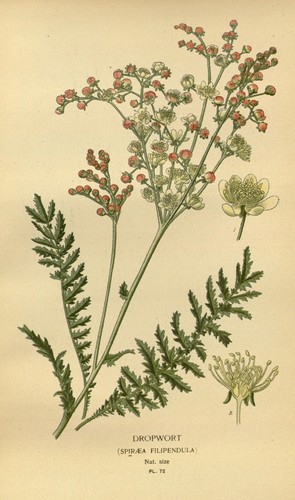
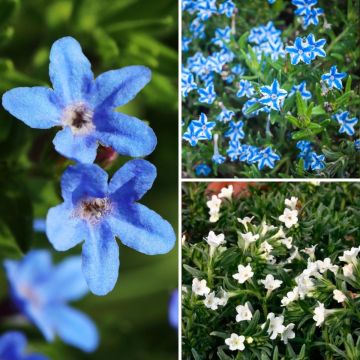
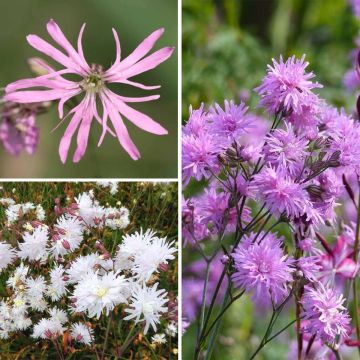

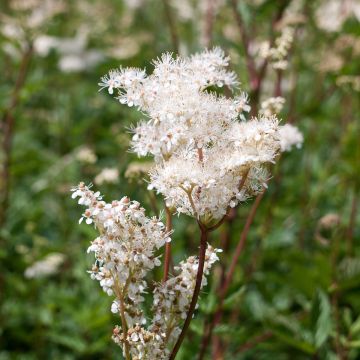



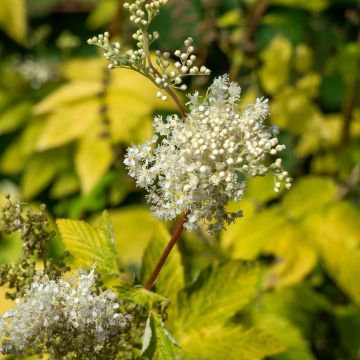
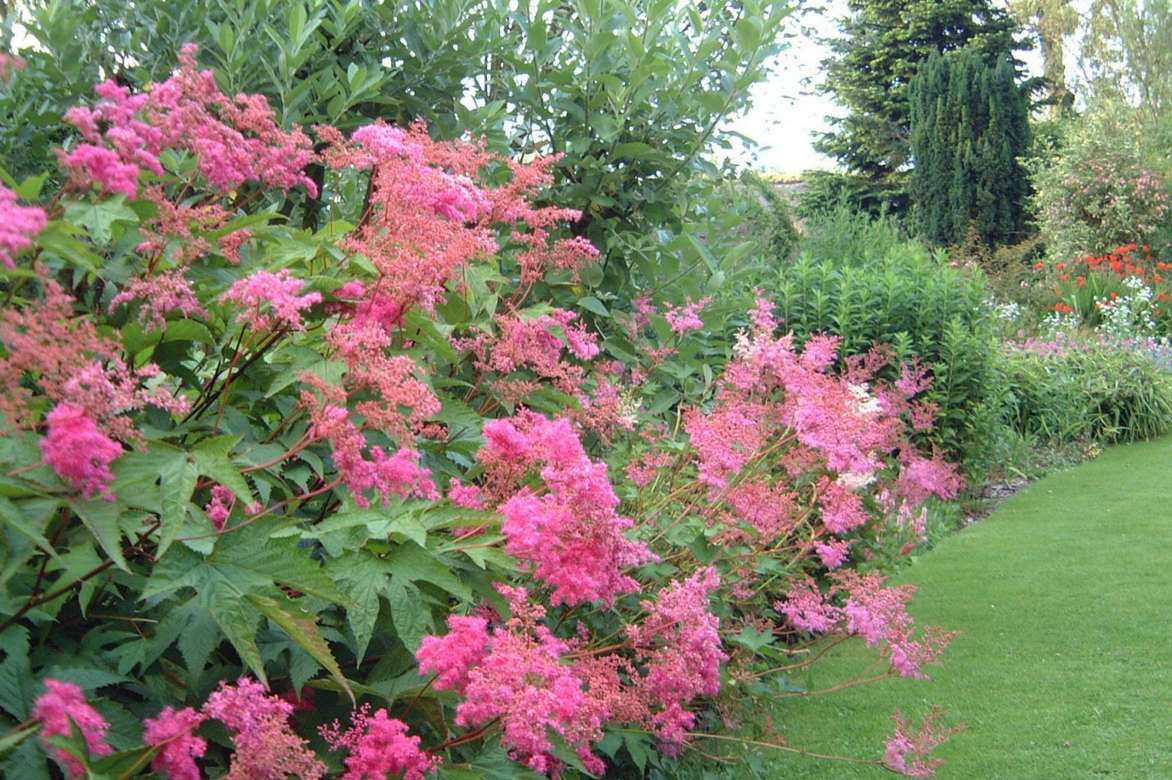
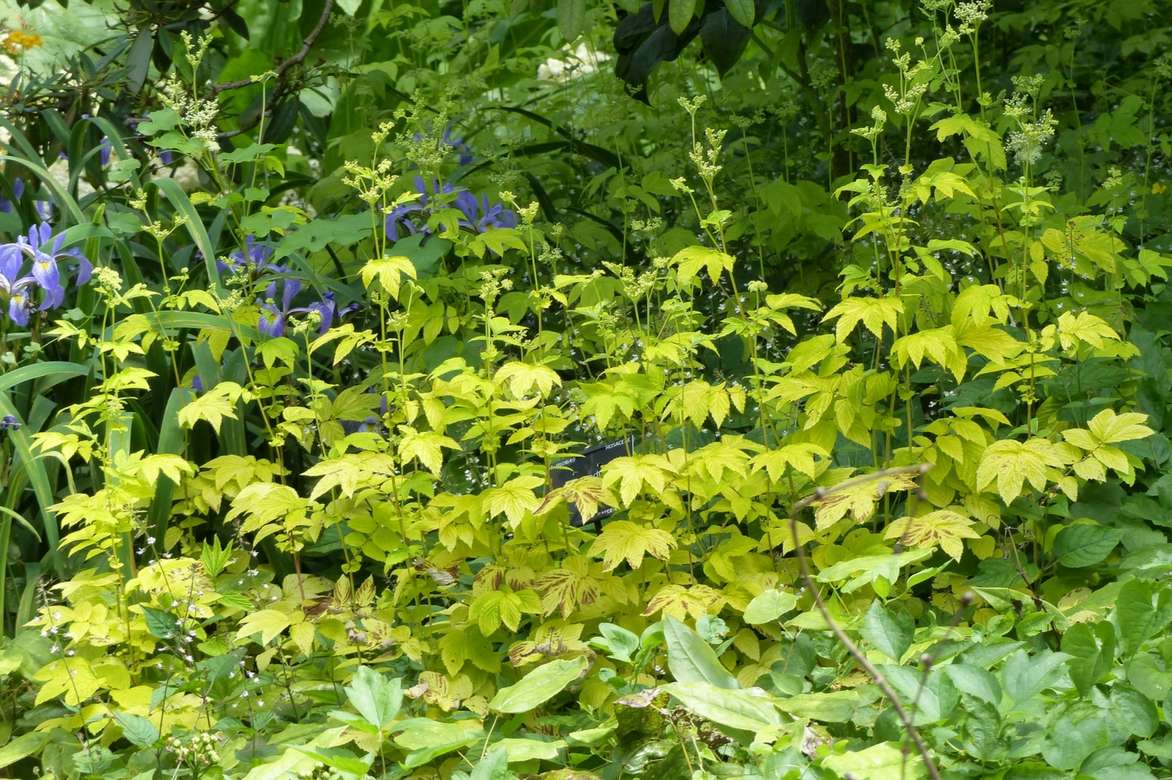
Comments